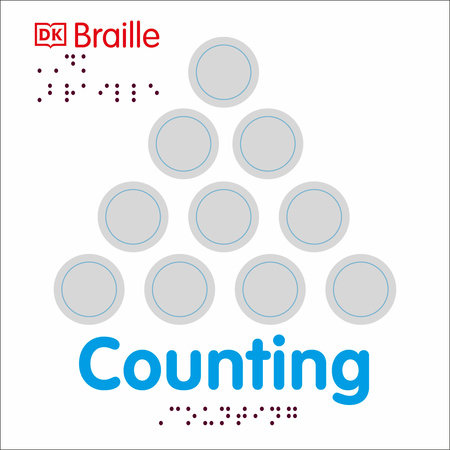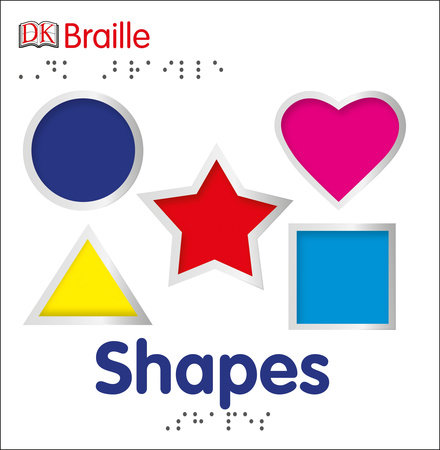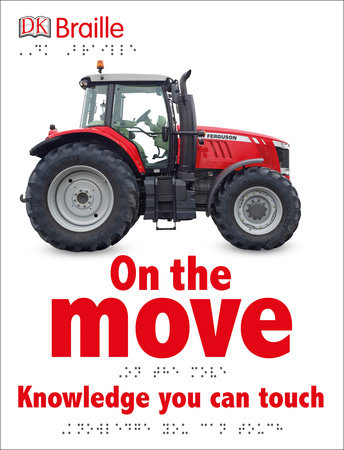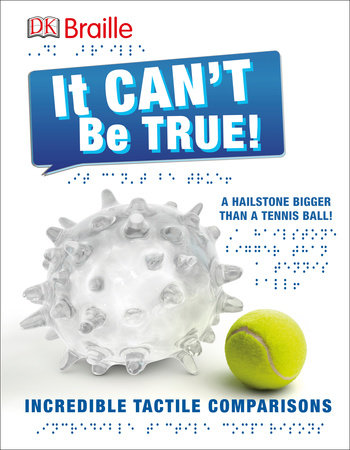New Braille Books Help Visually Impaired Kids Connect with the World
by the Brightly Editors
Earlier this year, DK — a publisher known for its highly visual encyclopedias for kids — entered uncharted territory when they launched an all-new braille series. The series, which includes board books and nonfiction favorites like It Can’t Be True!, features braille, colorful photos, and tactile images, a combination not often found in books for visually challenged people. This mix of storytelling elements means these books can be shared between sighted and visually challenged people alike, making them great for families.
In a chat with Brightly, three key members of the DK Braille Concept Development team share their thoughts on how these books can help visually challenged people better connect with the world and with others, and offer families the opportunity for a shared reading experience.
What was the inspiration for publishing a series of braille books?
Fleur Star (Senior Editor): Jemma Westing and I first discussed the idea of making DK braille books in March 2011. Unfortunately, we had a bit of a false start, until one day we were told that Charlotte Oliver in Production was also looking into braille…
Charlotte Oliver (Senior Producer): I had just come back from maternity leave and wanted to do something that felt worthwhile and would stop me missing my baby too much. One day on my commute I read a statistic that only 7% of published books are available in formats that help visually impaired readers — and less than 2% are braille — and that to me felt wrong and deeply sad.
Fleur: Charlotte knows the ins and outs of print publishing and felt there had to be a way to make braille books more available. She had no idea that just along the corridor, I’d been having a conversation with Jemma on the very same topic. We both asked, “Why couldn’t we make braille books?”
It took some time and a lot of research, but by 2014 we found ourselves in the position to begin production on a series of high-quality, custom books with braille and tactile images for blind and partially sighted children, or sighted children with blind parents.

Tell us more about why the books are both tactile and visual. What was the thinking behind this?
Fleur: DK is a visual reference publisher. Pictures help readers understand concepts. Why should people miss out on that just because they can’t see? We’ve taken our principles (“better by design”) and applied them to tactile reference books. There’s printed text alongside braille, and photographs or graphics with a variety of tactile textures including embossing, flocking, gloss, and — my personal favorite — the sticky worms in Counting!
Charlotte: The more I researched, the more the need for accessible books became clear. Children who have a visual impairment are more likely to have nightmares and experience them for longer than sighted children. Books about the world can help to reduce or at least mitigate this. Also, being able to access books means that people with visual impairments feel less socially isolated, which can improve mental health.

How is the production process for this series different from other DK series? Are there any unique challenges to producing tactile books?
Jemma Westing (Project Art Editor and Paper Engineer): We ordered some existing printed braille books into the office here in London when doing our initial research. I was shocked at the disconnect between words and tactile pictures. Some books did not have any tactile pictures at all. Everybody should have pictures to enjoy regardless of which of their senses they use to experience them.
With knowledge of some of our more unusual print processes, I instantly knew that we could create safe and accessible books featuring braille and tactile images in addition to our CMYK and text layers. We could unite sighted and visually impaired readers.
Fleur: We had some sticky moments. I spent hours working out the correct braille size and spacing using our regular software — but could the printer emboss braille at the right height? (Spoiler alert: yes.)
We’ve all learned lots along the way, especially through our partnership with the Royal National Institute of Blind People (RNIB) who were invaluable in their advice, checking the braille, and making sure the images were easy to understand.

How do the books address specific challenges that visually impaired children may have when they’re learning to read?
Fleur: These books are a shared learning experience. It sounds like a corny line, but it’s actually important. Visually impaired children often feel isolated, but they can share these books with friends and family. Counting and Shapes are just as valuable for visually impaired parents to read along with their sighted preschoolers as for visually impaired children themselves. Meanwhile, the subjects of the more advanced books are perennial favorites: animals, transport, and amazing facts.
What do you personally find compelling about this series? What makes it special to you?
Jemma: Shut your eyes and place your hands on an open book spread. What can you feel? Not a lot. Well, in 2016, visually impaired people around the world can put their hands down onto DK book pages and, instead of feeling nothing, words and pictures will reach out to them and will inform them of some of the pretty amazing things about our planet. Sighted readers will be able to feel the images too, and it will be a more interesting, exciting, and immersive experience. Both audiences can learn the same things by reading and sharing the same book.
Charlotte: At DK we pride ourselves on our content, and here is one of the best ways I have experienced to use that wealth of words and images to completely transform and enrich a child’s experience of the world.
Fleur: It is important to us to make our braille books affordable, globally accessible, and fully inclusive — books that can be shared with sighted friends and siblings, teachers and parents. This is the project I am most proud of in my 13 years of being at DK.
Are there more DK braille books in the pipeline?
Fleur: We certainly hope to do more in the future.
-
From DK Braille:
-
On the Move
Preorder from:It Can't Be True
Also available from:
A senior editor at DK, Fleur Star has worked in children’s non-fiction publishing for more than 13 years. She strongly believes that books should engage, educate and entertain. She also likes alliteration.
Jemma Westing graduated with first class honors from the Falmouth Illustration degree in 2010 and then dived straight into the visual reference publishing world as a book designer. With additional paper engineering experience, Jemma has helped DK to publish a range of interactive books and slot-model kits. Jemma supports creative, widening-participation initiatives and runs BrilliantBuilds, a not-for-profit family workshop in her spare time.
Charlotte Oliver been working in print production for a decade, first for The Folio Society and then at DK. She has a passion for all things book but gets giddy at the thought of paper, binding and special finishes. Charlotte’s aim is to use this strange love to create exciting tactile experiences for readers of all ages and abilities.




